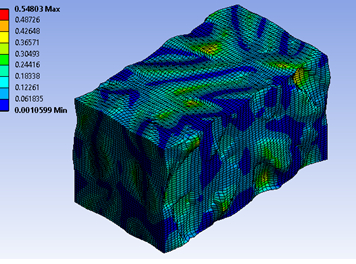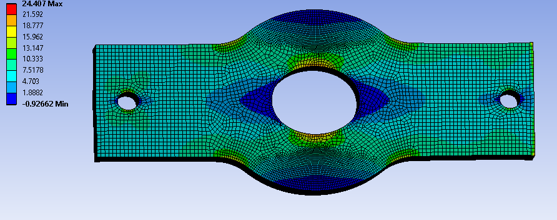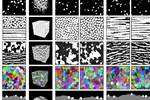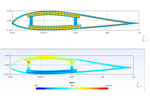Inha University incorporates SwiftComp simulation software to virtually test composites
AnalySwift’s SwiftComp tool aims to mitigate the burden of costly experiments and enable accurate testing of woven and braided composite structures.
Share
Read Next

Mesomodel of braided RVE-dehomogenized behavior. Photo Credit, all images: Inha University
It has been announced that Inha University (Incheon, South Korea) is participating in AnalySwift LLC’s (West Lafayette, Ind., U.S.) Academic Partner Program (APP), in addition to leveraging the company’s SwiftComp simulation software for virtual testing of braided and woven composite materials. The work is part research being conducted at the university’s Department of Mechanical Engineering.
The APP, launched in 2019, offers participating universities no-cost licenses of engineering software programs VABS and SwiftComp so students, researchers and faculty can leverage the tools in their academic research. CW has reported on Dalian University and Concordia University, which have also taken advantage of the program.
The SwiftComp program is a general-purpose, multi-scale modeling code that enables users to perform efficient and accurate modeling of composites and other advanced materials (metamaterials, architected materials, porous materials, tailorable composites etc.). According to AnalySwift, it can be used either as an independent tool for the virtual testing of composites, or as a plugin to power conventional finite element analysis (FEA) codes with high-fidelity, multi-scale modeling for composites.
“We are pleased to hear about the work being done by the Inha University in the area of woven and braided composites and are happy to learn SwiftComp has helped in their efforts,” Allan Wood, president and CEO of AnalySwift, says. “As a versatile, general-purpose, truly multi-scale modeling code for composites, it directly and seamlessly links detailed microstructure and structural behavior for composite structures including beams, plates/shells and 3D structures.”
“SwiftComp is an advantageous interface with third-party tools, such as Ansys and Abaqus,” says Vivek Kumar Dhimole, a PhD student in the Solid Mechanics Laboratory working under the direction of Professor Chongdu Cho. “We work on woven and braided composites. Specifically, we study polymer matrix composites [PMC] and ceramic matrix composites [CMC] and we use SwiftComp to find the stiffness of materials that will mitigate the burden of costly experiments. The tool is also used for the homogenization of composites. SwiftComp helps us to compare our calculated results and confirm their accuracy.”

Macromodel analysis of a plate with hole structure.
Dhimole points to the opening image of a braided anisotropic structure, which is homogenized to check the working of SwiftComp. “These structures can be used at the joint of two components for high out-of-plane strength for the aero, automobile and marine industries,” he explains. “Our research can help with homogenization and calculation of mechanical properties. SwiftComp is used for checking the accuracy of results. In our research, braided CMC dovetail mechanical properties are calculated and checked by SwiftComp. Those are used for macrostructure analysis of homogenized turbine blade dovetail to suggest the CMC material for turbine blade dovetail.”
“SwiftComp saves hours in computing time and resources with accuracy comparable to modeling all the microstructural details using 3D FEA,” Dr. Wenbin Yu, CTO of AnalySwift, adds. “It can also predict accurate local stresses and strains in the microstructure for the purpose of predicting strengths and thermal expansion of composites.”
Related Content
-
NASA names university teams for aeronautics research challenges
As part of the agency’s University Leadership Initiative, three multidisciplinary teams will address topics related to growth in AAM, while a fourth examines electricity generation for future airliners.
-
FACC Academy begins training, onboarding operations
FACC’s newly launched training platform will address skilled aerospace worker shortages head on, offering more than 250 specialized training courses for its entire workforce.
-
Toray, University of Chicago speed up polymer recycling R&D
A jointly developed multi-scale computational predictive technique can accurately predict viscoelasticity from the chemical structures of polymers, ramping up product maturation.












.jpg;maxWidth=300;quality=90)


